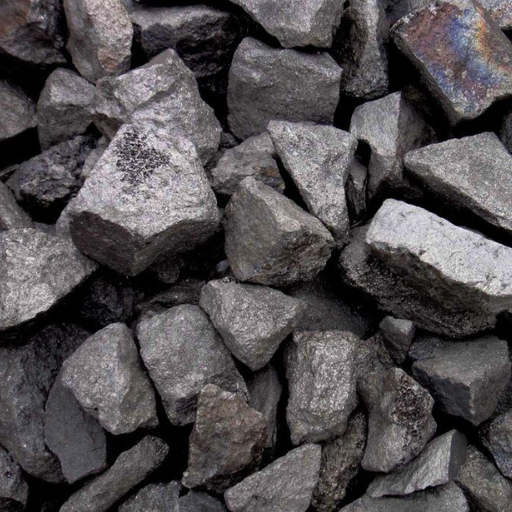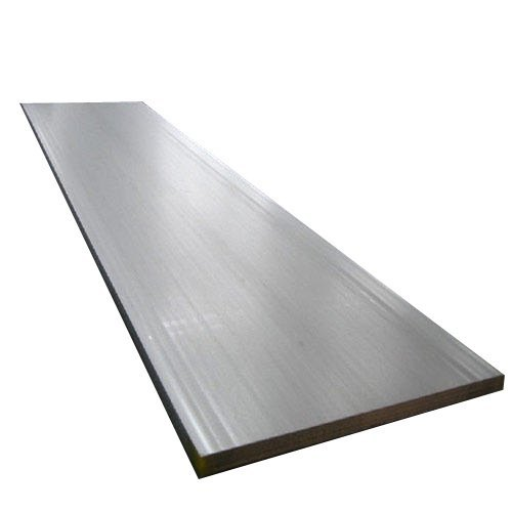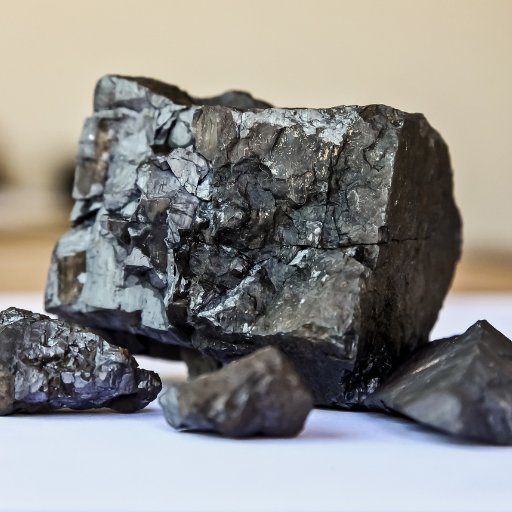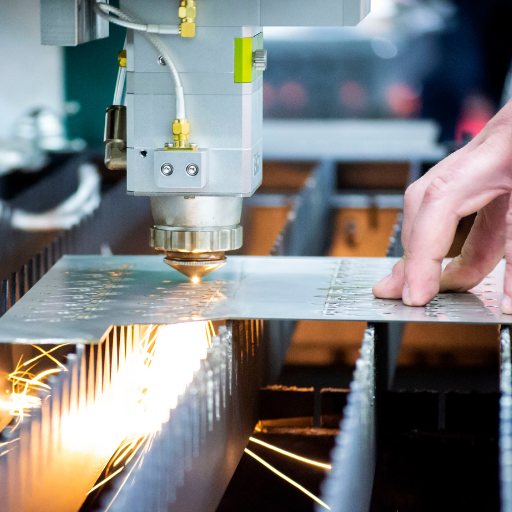Hadfield steel is an exclusive alloy popularly known as manganese steel because of its high impact strength and hardened state’s resistance to abrasion. This gives it a very important role in the heavy duty industries like mining, earthmoving and construction. In these sectors, one must understand well the attributes, uses and handling methods of this product. This article will look into why it stands out among others, how it can be used and maintained respectively. For both professionals who are veterans in the industry or beginners, this manual will guide them on basic knowledge about manganese steel and its importance.
What is manganese steel?

Image source: https://lsindustries.com/
Hadfield steel, commonly referred to as manganese steel contains primarily of carbon (0.8-1.25%) and manganese (around 12-14%), with the remainder being iron. It derives its exceptional strength, wear-resistance and ability to harden upon impact that makes it extremely long-lasting from this unusual combination. Work-hardening process creates properties that enable the external surface of this material harden whilst maintaining internal ductility hence making it resistant to abrasion even under harsh conditions such as those caused by repeated impacts which make it perfect for use in heavy machinery applications.
History and invention of Hadfield steel
In 1882, Sir Robert Hadfield, an English metallurgist, is credited with the invention of Hadfield steel. Following this invention and after experimenting with various compositions of steel in order to improve their toughness and wear resistance, there was a breakthrough. When he added a large amount of manganese to steel, Hadfield discovered that he could produce material that became much harder on impact yet remained extraordinarily durable. Consequently this new alloy came to be known as Hadfield Steel among other names through patenting thus causing radical changes in such areas like mining industry; railroads; and heavy machinery.
Chemical composition and presence of manganese
Due to the abundance of manganese in manganese steel (approximately 12-14% manganese and 0.8-1.25% carbon), it possesses exceptional properties. It should be noted that it is necessary for such high content that makes the metal work-harden by impact and become more resistant to wear while still retaining its ductile core at the same time. The strength and toughness are increased by manganese making it suitable for high impact and or abrasive situations in which it finds application (Tylecote, 2002). In addition Manganese’s specific chemical composition implies that it is perfect for heavy-duty applications like mining equipment, railroad track work, as well as heavy machinery parts where both durability and resistance to wear are crucial aspects within their lifespan.
Unique properties: high strength and abrasion resistance
Because of its great resistance to abrasion and high strength, Manganese steel is highly valued in industries that experience severe wear. It can be noted that this alloy is different from other types of steels due to its natural tendency to harden with deformation when subjected to heavy blows (impact), thereby increasing in hardness and toughness. Hence it has a high tensile strength and robustness in order to withstand adverse environments without compromising its structural integrity. In addition, the alloy’s ability to resist wearing out makes components such as jaw crushers, hammer mill liners and railway switches continue functioning properly even after prolonged periods of friction and constant stress thus minimizing costs of maintenance as well as downtimes.
How does manganese steel compare to other alloy steels?

Of all alloy steels, manganese steel stands out because of its unique work-hardening characteristics and good resistance towards wear and impact. While other alloy steels might demonstrate high strength together with hardness; they lack the special property which causes them to become harder while also more elastic after going through stress such as manganese steel. This means that such components can cope with much higher levels of abrasion or impact without becoming brittle. Besides, manganese steel has high toughness hence it remains durable in harsh environmental conditions while maintaining its structural integrity thus making it superior for applications requiring long-term wear resistance compared to other alloy steels with minimal maintenance requirements.
Comparison with carbon steel
In terms of composition and mechanical properties, manganese steel has several differences with carbon steel. Manganese steel that contains high levels of manganese possesses an outstanding resistance to cracking, hardness and capability to work harden. This makes it more effective in applications that need high wearability and impact resistance like those from mining sectors or heavy machinery parts. On the other hand, carbon steel that usually consists of lesser amounts of manganese is characterized by its high strength coupled with ductility but lack the ability of working hardening possessed by manganese steel. As a result, carbon steel easily wears out and deforms under the impact conditions. Despite being versatile as well as commonly used since it is cheap and easy to fabricate, it does not have as much resilience against severe abrasion corrosion as its counterpart is known for.
Differences with stainless steel
There are key differences between manganese steel and stainless steel in terms of what they do, their constituents and their properties. Manganese steel is known for being highly tough, very hard and having excellent work-hardening characteristics that make it the material of choice for high impact, abrasive applications. On the other hand, stainless steel is an alloy which consists mainly of iron, carbon with a significant amount of chromium that confers its characteristic corrosion resistance.
While manganese steel can be described as wear resistant and shock absorbent; however it does not have anti-corrosive properties like stainless steel. Rusting or staining resistance in this metal makes it applicable where there is moisture exposure or chemical use such as kitchen utensils, medical appliances and building constructions. Besides, stainless steel has both strength and beauty unlike manganese whose main focus is on durability under stress and heavy wearing but not much into corrosion resistance. Each type of these steels excels in their own sphere with manganese largely preferred in tough duty while stainless stands above all where both strength and resistance to rust are needed at once.
Advantages of hadfield manganese steel
Hadfield manganese steel is also known as austenitic manganese steel. This steel has many benefits that have made it highly regarded in various industries. One of its major advantages is that it work-hardens under impact and stress, thereby becoming harder and more resistant to wear. Therefore, Hadfield manganese steel can be used in such heavy-duty sectors as mining, rail transport and construction where elements are frequently exposed to severe abrasion.
This metal also boasts high toughness and ductility, enabling it to take in significant amounts of energy without breaking. The result of this attribute is that machinery or parts composed of this alloy can absorb large amounts of impact pressure and abrasive action without experiencing any critical harm.
Additionally, the material offers outstanding resistance to both abrasion and impact loads exceeding other types of steels in situations involving high-pressure grinding or heavy impacts. Nevertheless, even though it is so robustly durable and tough, the steel still retains a sufficient degree of malleability allowing machining or shaping into complicated geometrical designs if right techniques are applied.
To summarize this discussion we must note: there are no alternatives to the unparalleled durability shown by Hadfield Manganese Steel; its unique work-hardening properties make it especially suitable for high-demanding applications; finally, its astonishingly unyielding character demonstrates how much this kind of metal can be relied on when longevity and steadfastness matter most in their design.
What are the applications of manganese steel in the mining industry?

Primarily, in mining industry, manganese steel is appreciated for its outstanding resistance to wear and high capacity of impact. The uses include:
- Crusher Liners: These components are crucial in breaking down bigger rocks to smaller sizes as they enable machines serve longer.
- Grizzly Bars: Permanently placed with ore chutes, these bars endure serious impacts and permit the separation of materials based on their size.
- Pulverizing Equipment: Manganese steel is applied in grinding mills to effectively break down ore with minimum wear ensuring long-lasting units.
- Conveyor Components: Chains, sprockets and other conveyor parts made from manganese steel that can sustain continuous impacts and abrasion needed for smooth transportation of extracted minerals.
- Pumps and Track Pads: They offer dependability and endurance amidst harsh conditions used as slurry pumps or undercarriage components of mining machinery.
These diverse applications utilize special characteristics of manganese steel which makes it paramount in enhancing efficiency while decreasing downtime during mining operations.
Crusher and grinding machine parts
Crusher and grinding machine parts made from manganese steel are very important in mining because they can endure extreme abrasion. Here are the most important ones and their functions:
- Jaw Crusher Plates: They are meant to crush large stones and ores into smaller sizes that can be handled more easily. These plates are highly robust, due to the fact that manganese steel is hard and ductile, making them bearable under heavy stress and high pressurized condition.
- Cone Crusher Liners: These ensure that the crushing process does not damage the cones of the crushers. The durability of these liners contributes to continued performance of cone crushers for long periods.
- Impact Crusher Blow Bars: They impact material in impact crushers causing it to fracture into smaller pieces. Manganese steel allows blow bars a long wear life even when repeatedly exposed to intense impacts.
In grinding machinery:
- Ball Mill Liners: These line mill internals while at the same time helping grind ore particles down to fine form. Their longevity as well as their capacity to withstand wear is enhanced by manganese steel.
- Hammer Mill Hammers: They play a crucial role in breaking materials apart within hammer mills. Life span is prolonged by toughness of manganese steel; hence, high production rates are retained.
Manganese steel’s unique combination of toughness and wear-resistance makes it incredibly useful for crusher and grinding machine parts given its significance in mining industry’s strategy towards optimizing output without experiencing equipment downtime.
Wear and tear resistance in mining equipment
In order to ensure that mining equipment functions optimally, resistance against wear and tear is critical. High strength wear resistant alloys such as manganese steel have been developed through the application of contemporary material science. Materials of this category are produced mechanically, such that they can endure constant abrasion, impact loads, and pressure during mining operations. Furthermore maintenance regulars also help in extending lifespan through use of protective coatings and liners on mining equipments. By doing this productivity in mines will be boosted while downtime costs cut thereby reducing replacement expenses.
Other heavy-duty applications
The toughness of manganese steel make it applicable even for other heavy-duty activities apart from mining equipment. In a railway industry it is employed to produce crossing points and switch blades that highly suffer from wearing out and hitting effects. Besides rock crushers among other automotive parts necessitate manganese steel’s high level of abrasion resistance. Similarly for construction purposes, concrete mixers, rock crushers as well as cement equipment use bars as well as plates made from manganese steel. The applications benefit from the ability of manganese steel to withstand conditions characterized by high stresses hence ensuring that these items last long enough without any break down or faults since they were built with heavy machinery in mind that should not easily break down because; thus guaranteeing both endurance and dependability notwithstanding the harsh operating situations under which essential systems function today.
What is the role of heat treatment in manganese steel?

The process of enhancing manganese steel’s characteristics by changing its microstructure involves heat treatment. Normally, the method includes warming the steel to high temperature levels, followed by rapid cooling, usually with water. Consequently, this treatment increases the toughness and strength of the material making it more resistant to wear and impact. Moreover, heat treatment serves to remove internal stresses formed during casting hence improving steel durability in harsh working environments.
Heat treatment process for work hardening
The method of heat treatment for work hardening Mn steels typically starts with heating up the material at temperatures between 1000°C and 1100°C (1832°F and 2012°F). Then it is rapidly quenched in water or oil so as to keep the austenitic structure retained. Heat treatment aims at allowing a transformation that will enable hardening of the material under mechanical stress. After being cooled down, metal undergoes mechanical deformation that might be either hammering or rolling which results into dislocations within crystalline lattice. Therefore these dislocations render further development increasingly complex thus, increasing hardness and resistance to wear on metal surfaces. This process leads to a tough outer layer which makes it perfect for use in heavy duty applications where resistance against wear and impact are essential.
Effects of quenching on mechanical properties
Quenching has a significant effect on the mechanical properties of manganese steel, which is increased to high hardness and tensile strength. The austenitic structure is maintained when the steel cools very rapidly from high temperature making it to have better wear resistance. Quenching also improves toughness according to leading authorities but this is often accompanied by decreased ductility since such materials tend to become more fragile in nature. Through quenching, internal stresses and flaws are reduced via refining the grain structure resulting in a stronger, resilient steel that can be used in situations where there are high-impact as well as abrasive conditions. However, it must be noted that this method should be carefully controlled so as to avoid problems like distortions or cracking.
Improving tensile strength and toughness
To enhance tensile strength and toughness in manganese steel, precise heat treatment methods are used together with alloying. Top sources agree that adding elements like silicon, chromium, and molybdenum to the steel can significantly improve its properties. Silicon serves as a deoxidizer, increasing overall strength. Hardness and wear resistance are improved by chromium while brittleness is prevented and toughness is enhanced by molybdenum.
Tempering and annealing among others are also important for the process of heat treatment. In tempering, the quenched steel is reheated to a lower temperature reducing brittleness and increasing toughness. Annealing entails heating the steel to a specific temperature followed by slow cooling in order to refine grain structure and remove internal stresses thereby enhancing both tensile strength & toughness. By following these processes carefully, one can achieve an appropriate balance between hardness, toughness and ductility as desired.
What makes manganese steel a preferred material in manufacturing?

The exceptional wear resistance and high impact strength of manganese steel make it a preferred material for manufacturing. This makes it suitable for heavy-duty applications like making railway tracks, rock crushers and mining equipment. On the other hand, it can get harder as it works more making it survive longer in service. Furthermore, there is no cracking or breaking of manganese steel when subjected to high stresses and its resistance to abrasion makes it popular in demanding industrial environments.
High carbon content and its benefits
Compared to other types of steel, high carbon steel typically contains over 0.6% carbon content. Its hardness and strength are being increased by this increased amount of carbon which makes it most ideal for cutting tools, blades, springs, high-strength wires among others. High tensile strengths are also common due to the increased carbon levels hence making the metal less ductile but highly resistant to wear. These properties are useful especially where an application needs a sharp edge that will stand up through time or a structure that must have very high structural integrity under stress situations. Nevertheless, this hardness enhancement can also make high carbon steel brittle; therefore requiring careful control during heat treatment so as to obtain the desired balance between different properties.
Role of manganese content in enhancing properties
In steel, the manganese content is significant to its properties. The first of all is that it functions as a deoxidizer and eliminates undesirable impurities such as oxygen and sulfur that lead to improved purity and integrity of the metal. On the other hand, it stabilizes austenite phase thereby giving toughness as well as strength especially when exposed to high temperatures. As a result, it makes the steel more resistant to cracking or breaking under load. Finally, manganese contributes to hardenability of steel allowing heat treatment for higher hardness levels without excessive brittleness. These qualities collectively ensure that manganese is an indispensable alloying element in producing high-performance steels for different industrial applications.
Effectiveness in abrasive environments
High carbon steel with its increased hardness and wear resistance has proved itself remarkable in abrasive environments. High carbon allows it retain a sharp cutting edge which is crucial while working under conditions where materials are subjected to constant friction and wear. Further, the presence of manganese improves toughness and hardenability of this particular form ensuring it remains tough even under high-stress conditions. For these reasons, high carbon steel finds great application in tools and equipment used in mining, construction etc., where abrasive wear is a major concern.
Can manganese steel be welded?

Manganese steel can be welded, but it has to be done with caution due to its unique properties. The hardness and toughness of the steel increase with a high manganese content; hence, this may result in cracking if not properly dealt with. Preheating the material prior to welding and employing post-weld heat treatments are critical to prevent cracking and ensure strong bond. Besides that, using compatible filler materials as well as adopting controlled welding techniques can further enhance weld quality.
Challenges in welding high-manganese steel
Welding manganese steels call for special considerations because of their distinct characteristics. Primarily, there is rapid work hardening due to high manganese content which causes cracks during the process of welding and after it is over. Therefore, adequate usage of preheat treatment and post-weld heat treatment helps alleviate this problem. Secondarily, a proper selection of a filler material is important since this should match such qualities like severe impact resistance and abrasion resistance associated with manganese steels. Finally, structural integrity must be maintained during welding using lower heat input and slower cooling rates among other measures that avoid deformation occurrences all together. These are essential factors that have to be considered in order to make durable welds on high-manganese steel products.
Best practices for welding austenitic manganese steel
These are the key rules to be followed in order to make a decent quality weld of austenitic manganese steel:
- Preheating: Prior to starting welding, preheat the steel to a temperature ranging from 250°F and 500°F (120°C and 260°C). This will reduce its hardness thus reducing risks of cracking.
- Controlled Heat Input: Welding on low heat input should prevent excessive accumulation of heat which may lead to microstructural changes and consequent cracking. One should also use short controlled welded passes to avoid overheating.
- Appropriate Filler Material: Use filler materials that are compatible with austenitic manganese steel such as high chromium/nickel content for improving toughness as well as resistance against wear.
- Post-Weld Heat Treatment: A post-weld heat treatment (PWHT) is important after welding so as to relax residual stresses and minimize the risk of cracks developing. The process should allow for slow cooling of the welded component down to room temperature.
- Intermittent Welding: This allows material between passes time for cooling which helps maintain its structural integrity.
- Clean Surfaces: For a good and strong weld make sure that areas being welded are free from any form of contaminations like oil, grease, rust among others.
It is therefore helpful if we observe such rules so that we can get a durable weld without any fracture on Austenitic Manganese Steel (AMS) hence ensuring long life and reliability of the welded structure itself.
Post-welding heat treatment considerations
When performing post-weld heat treatment (PWHT) on austenitic manganese steel, there is need for strict adherence to specific protocols that will ensure that the best mechanical properties and longevity of the material is achieved. The following are the main considerations:
- Stress Relief: PWHT is primarily done in order to relieve residual stresses caused by welding operations. Stress relief annealing often involves uniformly heating the welded component to about 1100°F-1200°F (593°C-649°C) and maintaining it at such temperature for a certain period.
- Cooling Rate: Controlled cooling rates are very important in order to avoid sudden temperature changes that can result into thermal stresses or unwanted microstructural differences. Slow cooling in a still atmosphere or controlled environment is preferred.
- Avoid Overheating: It should be ensured that PWHT temperature does not exceed recommended range because overheating may cause grain growth, reducing its toughness as well as wear resistance.
- Temperature Uniformity: Maintain uniform temperatures throughout the entire component to prevent differential thermal expansion/contraction thereby introducing new residual stresses/distortions.
With these factors in mind, the post-weld heat treatment process will effectively improve performance and reliability of a welded structure thereby minimizing failures and extending service life.
Frequently Asked Questions (FAQs)
Q: What is manganese steel?
A: Manganese steel is a steel alloy containing between 11% to 15% manganese, offering high impact strength and resistance to abrasion once it is hardened. It is often referred to as Hadfield steel or mangalloy.
Q: How is manganese steel used in various industries?
A: Manganese steel is often used in high impact environments, such as in the mining industry, cement mixers, rock crushers, and other heavy machinery needing high durability.
Q: Why is manganese steel non-magnetic?
A: The alloy composition, specifically the high proportion of manganese, makes the steel non-magnetic. This is advantageous in certain industrial applications where magnetic interference needs to be minimized.
Q: What are the benefits of using manganese steel?
A: The main benefits include high toughness, the ability to work harden, and high resistance to abrasion and impact. These properties make it ideal for extreme duty applications.
Q: What is the significance of the addition of manganese to steel?
A: The addition of manganese improves the steel’s strength and toughness and helps in counteracting the brittleness that can result from the presence of sulfur and oxygen.
Q: What is work hardening steel?
A: Work hardening steel, such as high manganese steel, becomes harder and more wear-resistant after being subjected to mechanical stress or deformation. This property is highly useful in applications exposed to high-impact wear.
Q: Can you explain the term ‘austenitic steels’ in the context of manganese steel?
A: Austenitic steels are a category of stainless steel that possess a face-centered cubic crystal structure. High manganese steel falls under this category, known for its toughness and ability to withstand high impacts.
Q: What are steel sheets and where are they used?
A: Steel sheets are flat-rolled pieces of steel that can be used in a variety of applications, such as in automotive panels, construction materials, and appliances. In the context of manganese steel, they can be used for their high durability and wear resistance.
Q: What role does high manganese steel play in casting processes?
A: High manganese steel is often used in casting processes to create components that require excellent toughness and resistance to abrasion. This makes it perfect for making parts like crusher linings and shovel buckets.
Q: What makes manganese steel particularly suitable for use in the mining industry?
A: Manganese steel is highly suitable for the mining industry due to its combination of high impact strength, wear resistance, and toughness. These properties make it ideal for the harsh conditions and heavy-duty equipment used in mining operations.








